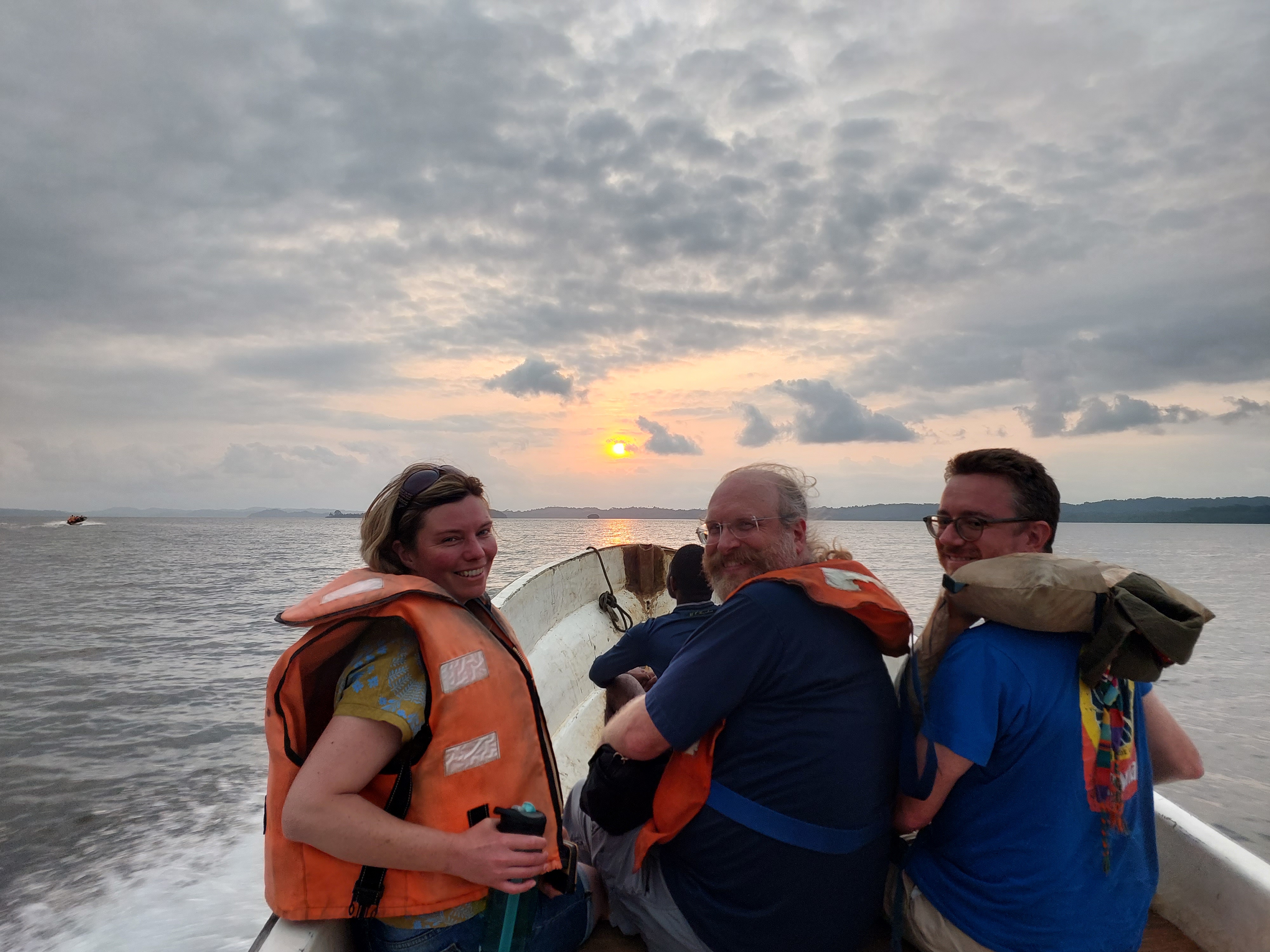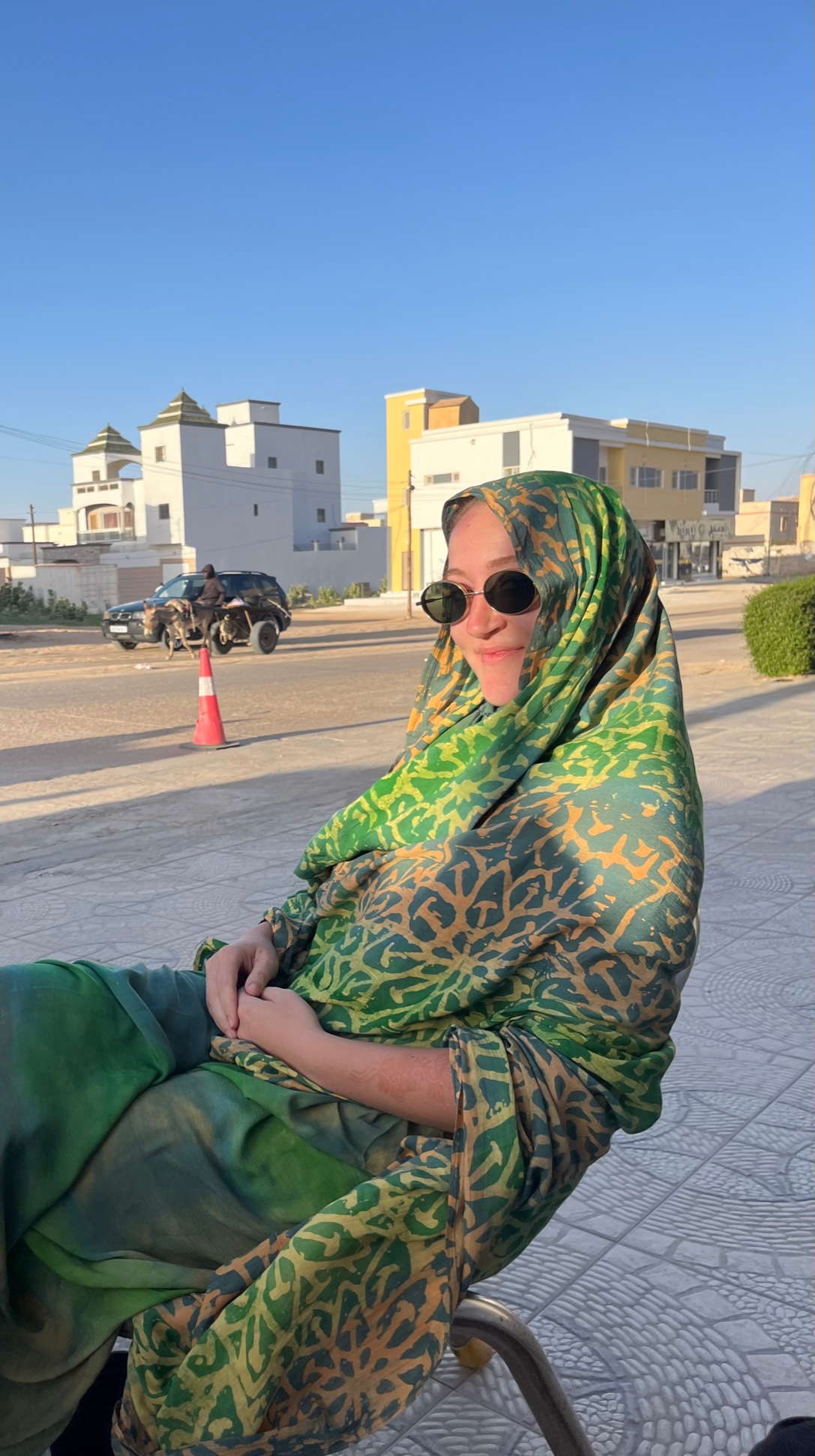Trying to figure out the best time of year to visit Equatorial Guinea? While there are some suggested seasons to visit, the answer may not actually matter much. Equatorial Guinea has a tropical climate, meaning any time of year is likely going to be warm and humid. There are dryer months than others, but even dry season can be wet! From a rain standpoint, the best time to visit Equatorial Guinea is between December and February for Malabo, and from June to August on the mainland. But as I mentioned before, even during dry season you should still be prepared for showers. The temperature is fairly consistent throughout the year, averaging 26 degrees Celsius (70 Fahrenheit). Even though the temperature is fairly mild, it will pretty much always be humid and super muggy, so it will feel hot.
Even during the wet season, however, the rain typically doesn’t last all day, meaning an experienced traveler can make any time of year work. No matter what time of year you’re traveling, you’ll want to stay on top of the weather forecast and road conditions. Keep in mind that wi-fi is often unreliable in Equatorial Guinea so you might not be able to depend on your go-to weather app to tell you when the next downpour will be. You’ll want to rely on on-the-ground advice from your accommodation staff, or if you’re on a group tour, your tour guide will keep you updated on what to expect each day.
While not technically located on the equator, Equatorial Guinea’s name really says it all in terms of what to expect with the weather - unchangingly warm and humid. Most of Equatorial Guinea, including the island of Bioko and the mainland sit slightly north of the equator. However, one of its islands, Annabón, sits slightly south of the equator, making Equatorial Guinea the only country in the world with land on both sides of the equator, while not actually touching the equatorial line itself! Of course, Annabón has its own weather patterns as well, with dry season being from June to October.
Malabo and Bioko vs. Mainland
Regardless of the time of year, if you plan to visit both the current capital of Malabo and the mainland, you’re going to want to bring a rain jacket, as the rainfall patterns are not the same between the two places. Malabo is situated on the island Bioko, about 160km from the northernmost tip of continental Equatorial Guinea. It is likely where you will fly into if you are not crossing a land border. However, even though the weather patterns are meant to be opposite, in our experience, we’ve gotten soaked on both Bioko and the mainland in the same week!
Bioko is also home to one of the wettest places on earth, the village of San Antonio de Ureca. This small village gets an average of 418 inches (10,450mm) of rainfall a year, making it officially the wettest place in Africa!
The mainland technically has two wet seasons. The time with the most rainfall is September to December, with October usually being the wettest month. There is also another wet season from February to June, though there is usually not quite as much rainfall as the wet season later in the year. On the mainland, the temperature will be hottest and the rainfall will be heaviest on the coast. Temperatures get slightly cooler and rainfall lessens a bit the further east you travel into the mainland.
There are pros and cons to planning your Equatorial Guinea travel during any season. While wet season could bring consistent daily showers, it can also have dramatic cloud formations, extreme waterfalls, misty mountains, and lush vegetation. Shoulder season means you’ll likely experience rain for much of your trip on both Bioko and the mainland, but it is a beautiful time to visit the country and prices can be lower. And dry seasons for both Bioko and the mainland can bring some of the best wildlife viewing and beach weather.
Weather Breakdown:
December-February
This time is dry season on Bioko, so the island and capital will experience the fewest showers during this time, but still high humidity. Visitors to Bioko Island during dry season can also witness a fascinating natural phenomenon on Playa de Arena Blanca. From December to February thousands of butterflies gather on the beach for mating season, creating a dense wildlife spectacle. The island actually has one of the most diverse butterfly populations in the world, with 172 recorded species.
This is shoulder season for the mainland. Of course, in Equatorial Guinea, shoulder season still means pretty wet! However, visiting during the shoulder season has its benefits. This is when the landscapes of the country are at their most lush and green, and accommodation prices can be a bit less expensive. You could still have some beach days and good wildlife viewing opportunities, but you should be prepared for sudden showers.
March-May
This is shoulder season for Bioko. You can expect consistently warm temperatures, but a fairly high likelihood of showers. March also brings the end of turtle nesting season on Bioko, which means it’s the best time to have a chance of witnessing baby turtles hatching. The best place for viewing this amazing spectacle is on the beach near Ureca.
This is the first wet season of the year for the mainland. You can expect frequent showers, though it is not quite as wet as later on in the year.
June-August
This is wet season in Malabo, and you can expect daily showers. While the temperature will stay comparable to other times of year, during wet season there is a 70% chance of rain on any given day, with July being the wettest month. One of the most frustrating aspects of wet season is transportation. Muddy and flooded roads can seriously delay your plans, so it’s important to be flexible.
June to August is dry season on the mainland. This is the best time to visit beaches, and the lush jungles and national parks of the mainland. It’s an ideal time for catching glimpses of colorful birds, chimpanzees and gorillas, antelopes, and, if you’re lucky, maybe even a leopard! Of course, showers can still happen and humidity will still be high.
September-November
This is again shoulder season for Bioko. As with March-May, the vegetation will be lush, waterfalls will be full, and the clouds can often be dramatic, making it a great time of year for nature photographers to visit. Again, as it is shoulder season, prices can be lower, making it an attractive time to visit for budget-conscious travelers.
This is the second wet season for the mainland, with the heaviest rains being in October. You should be prepared to have a flexible itinerary in case the rain delays your travel plans. Note that roads can often become muddy or flooded, so hiring a 4x4 vehicle with high clearance can be essential. However, even with the best transportation, some roads can still become impassable.
Special Events throughout the Year
If you’re the type of traveler who is wanting to visit Equatorial Guinea, you’ve likely visited many countries and are used to a variety of weather conditions. Possibly, you want to time your Equatorial Guinea visit around a unique event or festival as opposed to humidity levels and likelihood of rain.
Independence Day
Equatorial Guinea’s Independence Day is celebrated each year on October 12 th , to commemorate the end of Spanish colonization. It is one of the most significant national celebrations in the country. In the capital, people will gather to enjoy parades, music and dance performances, and speeches. The performances will show off the unique cultural heritage of Equatorial Guinea, and the streets will be filled with people celebrating and showing their national pride.
Mother Languages Festival
This is a two-day festival that takes place every February celebrating the native languages and culture of Equatorial Guinea. The event brings together people from across the country to listen to musical performances and partake in the festivities. People from the hosting village will also prepare local and traditional dishes to share with attendees. The festival’s purpose is to promote linguistic diversity and help keep the country’s vast array of languages alive.
We offer group tours for both Independence Day and the Mother Languages Festival. Check them out here !
The Abira
The Abira is a very lively festival that occurs every year, usually in late December, and is centered around an indigenous tradition. The purpose of the festival is to cleanse the community of evil, and one of the most important and exciting rituals during this time is the balélé . There is much song and dance throughout the Abira, but the balélé is the most important of them. The Abira is traditionally connected to the Bubi people of Equatorial Guinea , however it is now practiced nationwide and celebrated as part of the country’s rich cultural history.
Overview
Regardless of the time of year, make sure your travel plans in Equatorial Guinea are flexible. Showers can be sudden, and you might need to move things in your itinerary around due to the rain. If you embrace the fact that you are likely going to get wet at some point, you can make any time of year a decent time to visit the country. Be sure to pack light-weight breathable clothes to combat the humidity, and waterproof shoes and gear to combat the rain.
If you’re planning a trip to Equatorial Guinea, check out our Equatorial Guinea Destination Guide for more useful information! As I mentioned above, we also offer group tours, which you can check out here . Of course, if our dates don’t work for you or you prefer to travel solo, we can always help plan a private tour. Reach out to us at [email protected] for more information.



